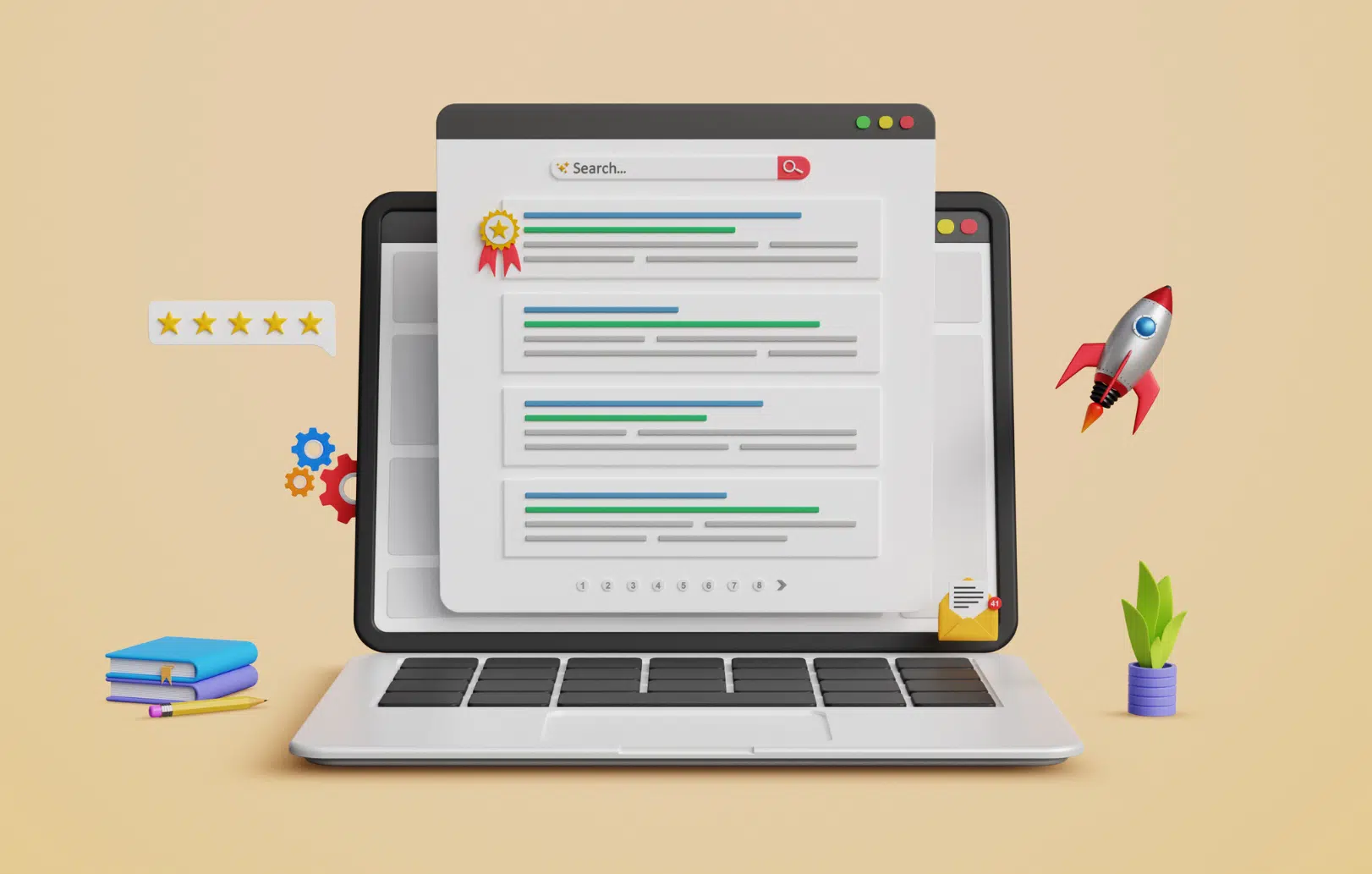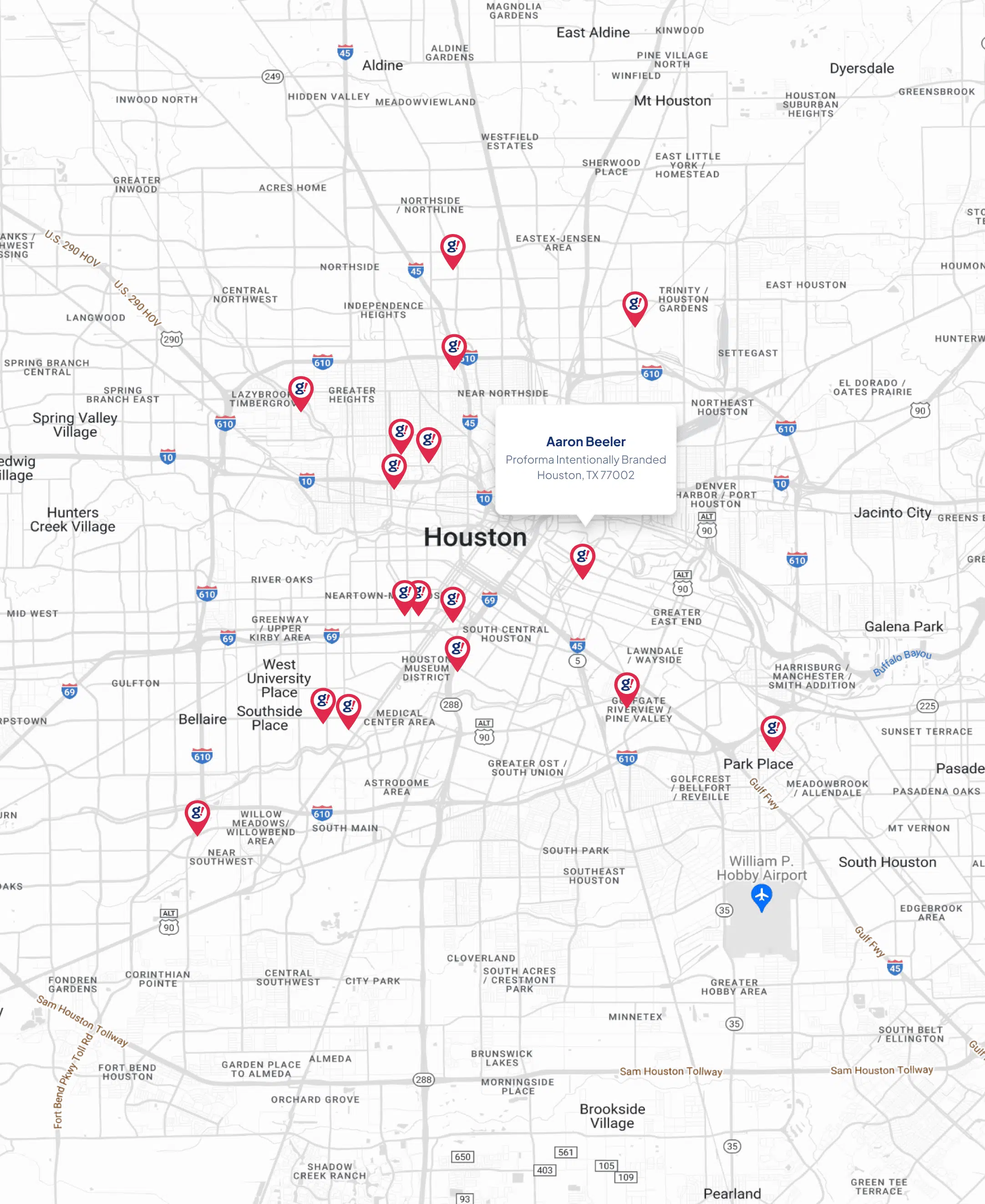AI has officially crossed the line from “trend” to “competitive separator.” Local marketing used to be about showing up on Google, maintaining strong reviews, and publishing content consistently. Those things still matter, but they are no longer enough. AI is now the force determining who becomes visible, who fades from search results, and who loses market share without even realizing why.
The imbalance is clear. Enterprise brands, national chains, franchise networks, and venture-backed platforms are using AI at a scale small businesses cannot match alone. They can deploy thousands of localized pages, optimize ads across every platform in real time, and feed massive datasets into models that refine their strategy every hour. Meanwhile, a local business might spend a month perfecting a single service page.
This is the real story behind AI and local marketing. The competitive gap is widening, and the winners are the ones who learn to use AI like the big players, without the budget or headcount of a big player. The question is no longer whether local businesses should use AI. It is how fast they can adapt before competitors outrank them everywhere that matters.
Search Is Not A List Of Links Anymore
Search used to be simple: type a phrase, get a list of websites, click the best one. That system is being replaced by AI-generated answers. Google’s AI responses, Microsoft Copilot’s search layer, and new AI-first search tools all deliver summaries instead of long lists. They take the best content, merge it, and give the user what they need instantly.
That means fewer clicks for everyone. The only businesses that show up in these answers are the ones with clear, detailed, verified information. When AI scans the web for expertise, it pulls from pages that answer specific questions, explain real scenarios, and demonstrate authority.
If your business does not show depth, structure, or clarity, AI will not surface you. It is that simple.
Search Is Becoming A Conversation
People are no longer searching with short phrases. They are speaking to search tools the same way they speak to a person.
As requests become more conversational, AI systems evaluate context, urgency, location, and the type of provider the user needs. Enterprise companies already prepare for this with hundreds of scenario pages. Local businesses often do not.
The takeaway is simple: if you answer real situations with real explanations, AI will treat you as relevant. If you rely on broad keywords, you will be invisible.
Reviews Are Becoming Data Signals, Not Just Social Proof
Reviews used to matter for persuading humans. Today, they matter just as much for informing algorithms. AI reads every review and finds patterns humans miss. It identifies recurring complaints, consistent praise, tone, sentiment, and category clusters. It even evaluates how you respond.
Your reviews become a digital reputation profile that affects how visible you are in search rankings and map recommendations. A small number of specific, detailed reviews can often outweigh a large number of vague ones. Quality matters more than volume, and authenticity matters more than perfect scores.
AI Is Making Hyper Local Personalization Accessible To Everyone
Enterprise brands have been personalizing marketing for years. They show different messages to different neighborhoods, audiences, and languages. AI is bringing that same capability to small businesses without requiring enterprise budgets.
A single business can now tailor content for:
• different neighborhoods
• different age groups
• different cultural or language communities
• different customer situations
This creates a deeper sense of relevance. It allows small businesses to feel “local” in every corner of their market, the same way big brands always have.
First Party Data Is Becoming A Core Competitive Advantage
As privacy rules evolve and tracking changes, third party data becomes less useful. First party data becomes essential. Even small datasets can become powerful once AI identifies patterns.
It can reveal:
• which services attract your best customers
• which neighborhoods produce the highest lifetime value
• what seasons or triggers increase demand
• which leads are most likely to convert
Enterprise brands have always used data to predict growth. AI finally gives small businesses the same opportunity without needing a full analytics department.
Automation Is Growing, But Strategy Still Decides Who Wins
AI can write content, generate creative, translate pages, analyze data, and refine messaging in seconds. It can reduce hours of work to minutes. Still, the companies that win are not the ones who automate the most. They are the ones who automate the right things.
AI amplifies the foundation you already have. If your messaging, positioning, and service quality are strong, AI helps you scale that strength. If your brand is unclear or inconsistent, AI multiplies the confusion.
This is why strategy still matters. Human judgment is still the difference between noise and impact.
The Hard Truth: AI Is Creating A Two Tier Local Economy
This is the part most articles skip. AI is creating a clear divide.
There is the group of businesses that use AI effectively. Their content is deeper. Their data is cleaner. Their insights are stronger. Their online footprint grows automatically. Search platforms see them as reliable and reward them with visibility.
Then there is everyone else.
These businesses are not doing anything wrong. They just get drowned out because the competitive standard is being raised without warning.
The good news is that small businesses do not need enterprise budgets to compete. They only need to focus AI on the areas that matter most: content depth, structured data, review interpretation, local relevance, and responsiveness. Those are the levers that shift competitive outcomes.
The Future Of Local Marketing Rewards Clarity, Consistency, And Depth
AI is not replacing local marketing. It is enforcing a higher standard across every channel that influences discovery. The businesses that win will be the ones that describe their services more clearly, answer questions more thoroughly, maintain cleaner data, and treat their online presence like a living system instead of a set of static pages.
Small businesses do not have to match enterprise companies effort for effort. They only need to use AI with the same intentionality. When you become clearer, more relevant, and more consistent than your competitors, AI will choose you.
Local visibility will come down to one thing.
Who gives the best answer for the person searching right now.
That is the future of local marketing. And it is already here.








